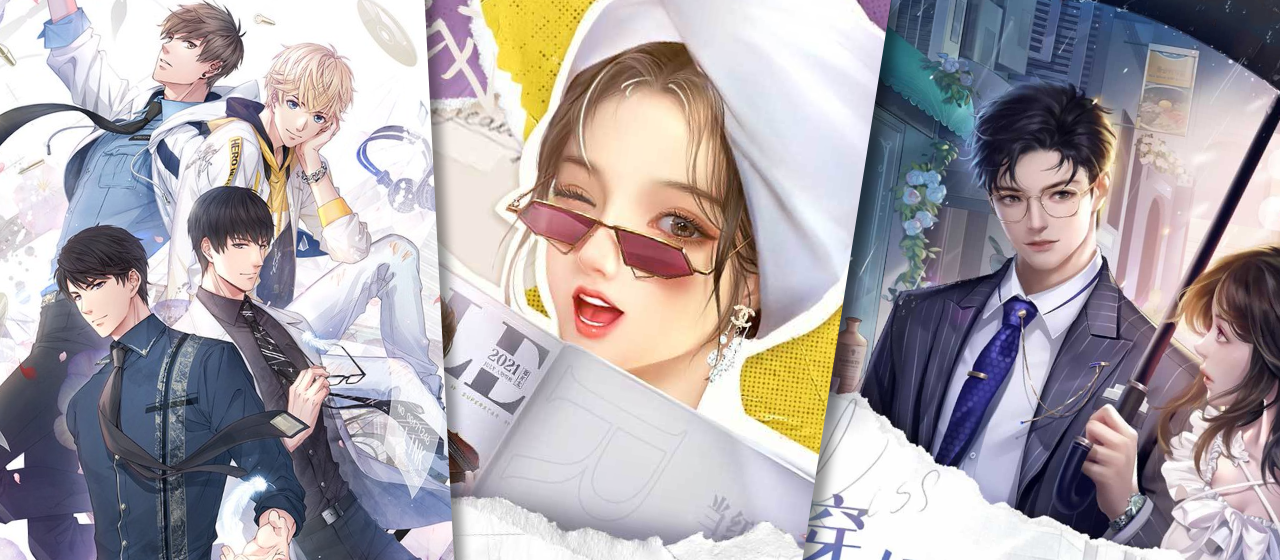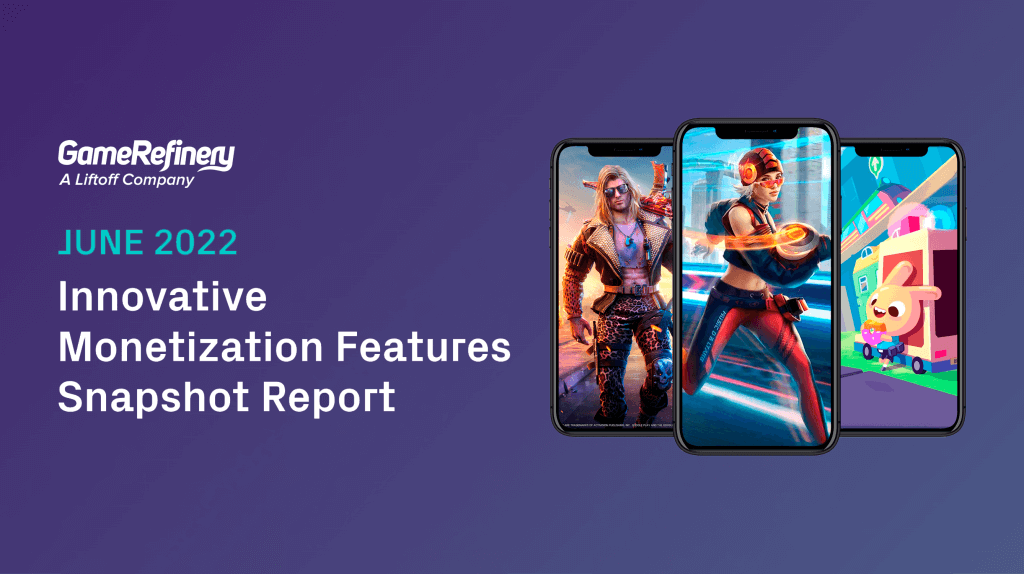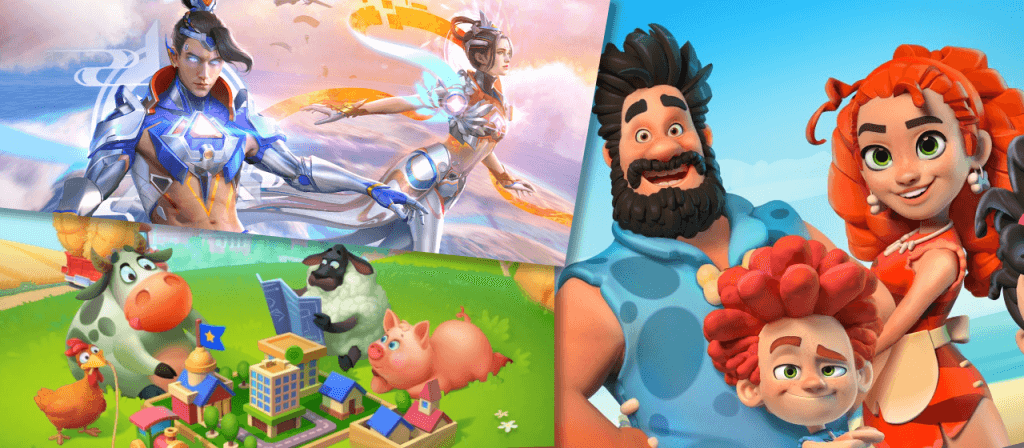You’re probably familiar with typical Western interactive story games like Choices: Stories You Play and Episode – Choose Your Story, where you follow characters’ journeys, make decisions, and progress through the storyline. A lot of these games share common themes, but the last thing you’d expect in an interactive story game is a PvE boss mode, right?
Things are pretty different when it comes to Chinese interactive story games. From hybrid gameplay elements, meta layers, and more monetization options, let’s take a look at some of the main differences between Chinese and Western interactive story games.
Interactive story games are games with light gameplay mechanics, and the main focus is on interactive storytelling. Usually, players can make decisions (e.g., dialogue choices) that affect how the story progresses and how other characters interact with you in the future.
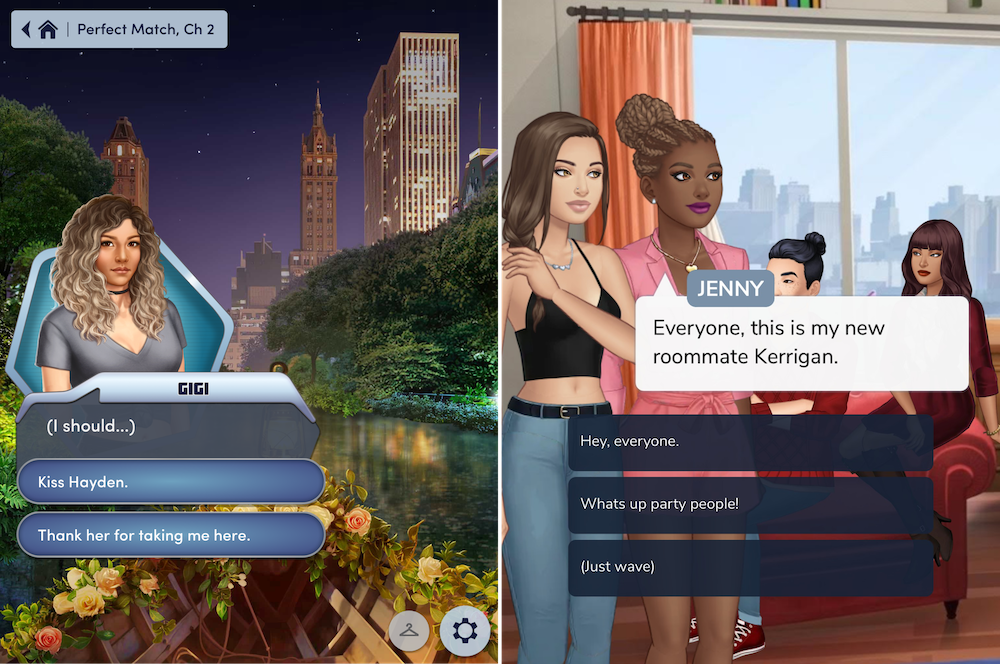
Recently, we’ve seen a steady increase of new interactive story games making it into the top-grossing 200 chart in the Chinese iOS market. The genre has certainly won the hearts of Chinese mobile players, but there are a couple of differences between Western interactive story games and those that are gaining more popularity in China.
In the Western market, stories usually revolve around drama and romance themes, but there is a possibility for other types of stories too, such as in the interactive story game Choices, where the player can follow adventure and fantasy-themed stories. Monetization is also focused on the aim of progressing in the story. There is often a possibility to unlock premium choices and premium clothing/accessories using premium currency. The Western interactive story games might also contain some light social elements, such as sharing stories with other players.
But what about Chinese interactive story games? Similar to how other genres are adapted for overseas markets, Chinese interactive story games differ from their Western counterparts in several ways. Let’s find out the differences and the special traits the Chinese games have.
Storyline and core gameplay
Chinese interactive story games tend to also focus on a romantic theme, just as their Western siblings. In addition to love, there can also be some kind of “success” story – the player’s avatar wants to become successful in life. For example, in Mr Love: Queen’s Choice (恋与制作人), the player wants to become a successful media producer.
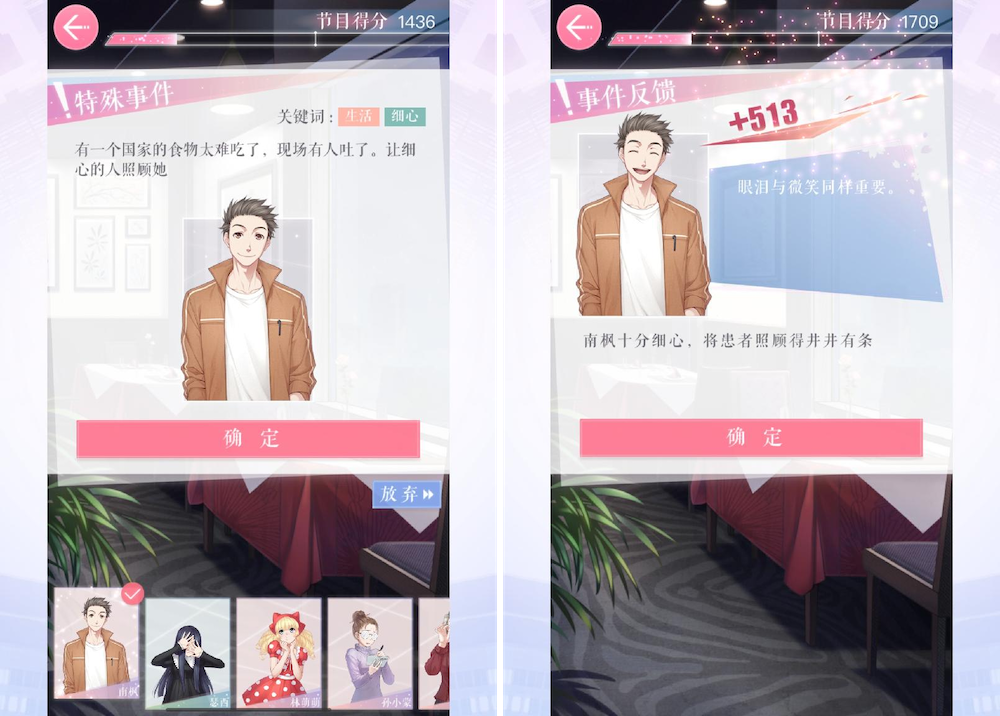
The core gameplay is fairly similar to the Western interactive story games in most parts. Players progress through games by following the story and occasionally making decisions on how to reply, which will affect how the storyline builds up.
What makes Chinese interactive story games different from the Western ones is their use of hybrid gameplay elements in the core gameplay alongside the main story. In Day and Night (光与夜之恋), players have to clear special PvE levels in between the storyline segments. These special levels involve players fighting and having to burst “bubbles” with the player’s characters to collect a required amount of jigsaw puzzle pieces inside of them to pass the level, as well as a rhythm game where the player needs to pass in order to progress in the storyline.
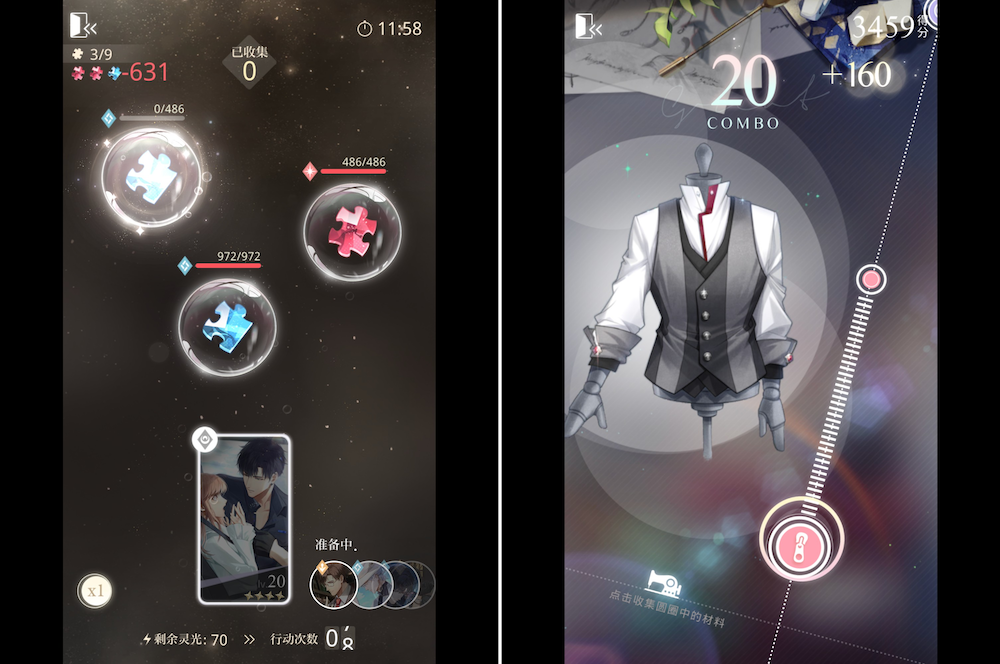
In another interactive story game, I’m a True Princess (我本千金), players fight against NPCs from the storyline with their main character/avatar in an automated battle, as well as bosses with their collection of upgradable characters.
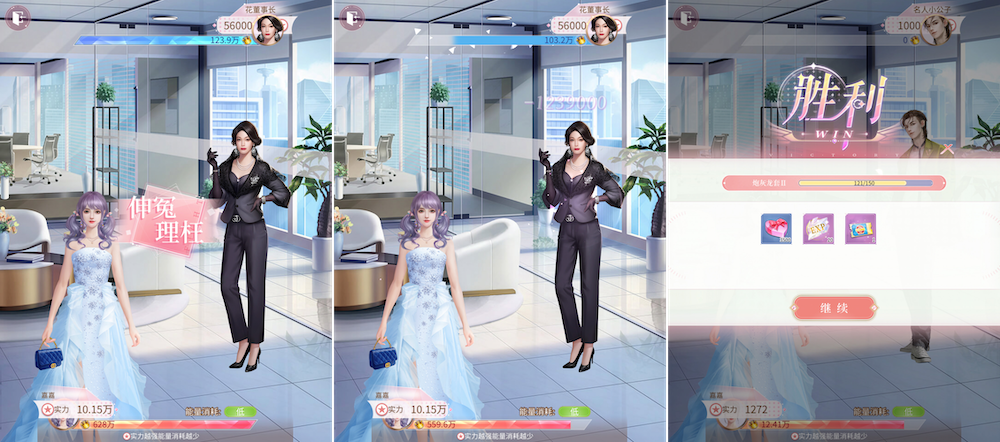
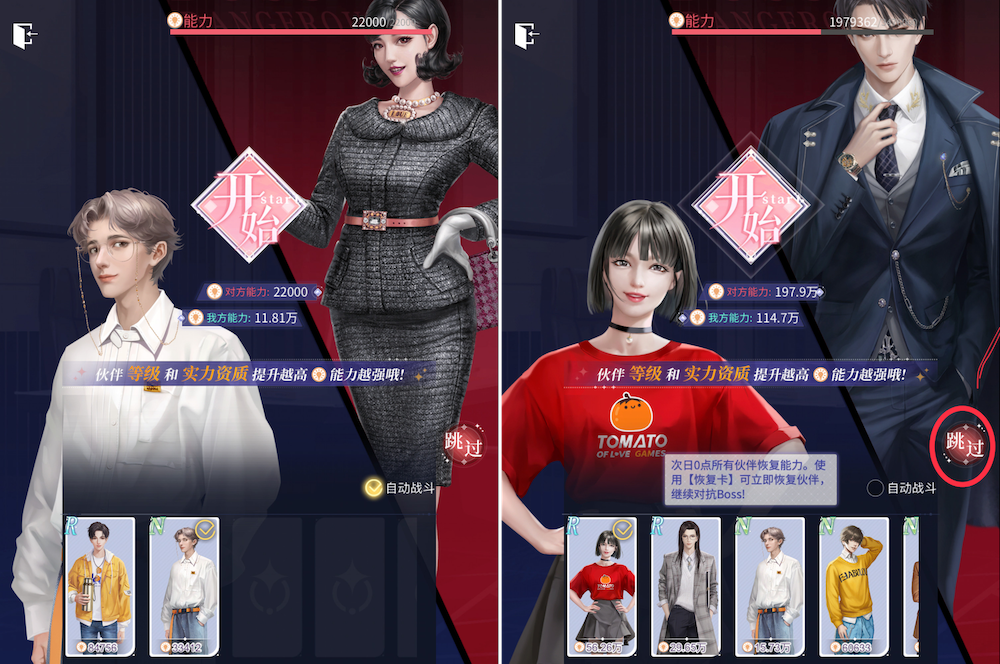
Meta elements in Chinese interactive story games
One way Chinese interactive story games are distinctive from Western ones can be seen in their meta elements. In China, these games focus on building a character roster and upgrading and developing these characters in order to succeed in the core gameplay. In Day and Night, the player needs male characters to progress through PvE battles, while I’m a True Princess requires players to use their character roster to fight in boss battles, both in the main storyline as well as in other playmodes.
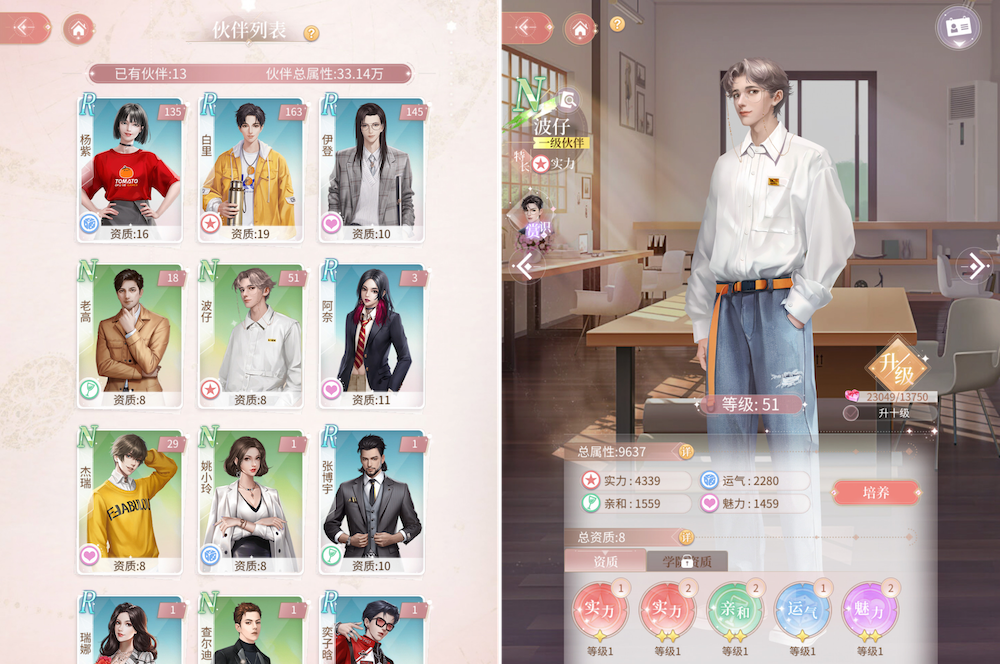
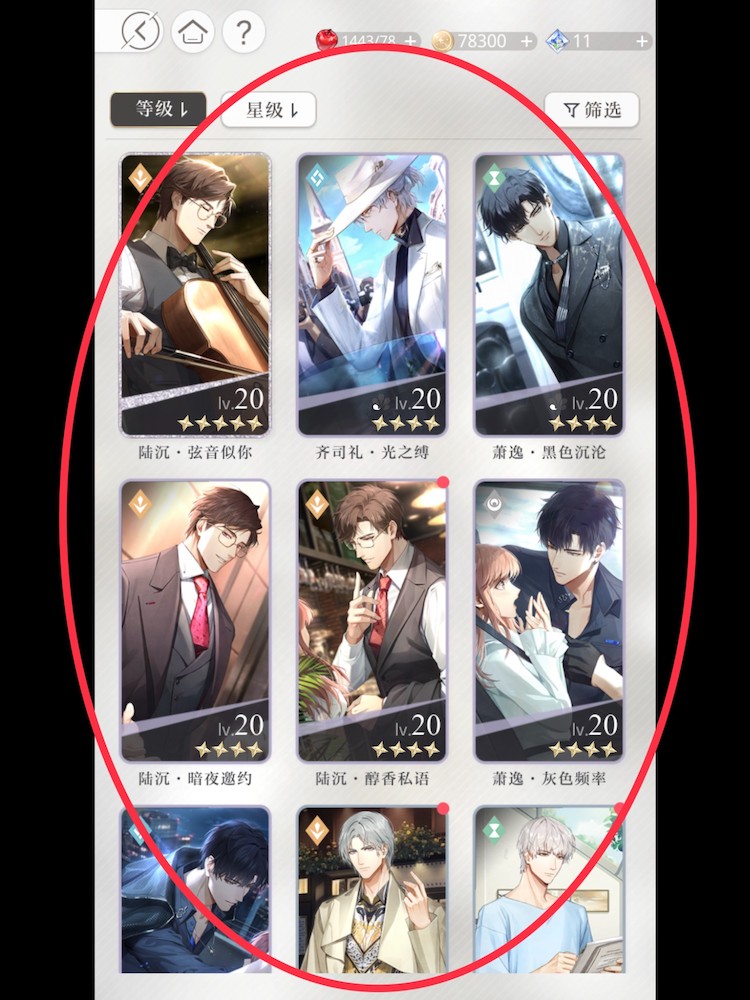
These games often have a romantic theme, and there are also some handsome boys to collect. In I’m a True Princess, players can interact with the male characters called “male friends,” which differ from the already-mentioned upgradeable characters needed in the core gameplay. Players can increase their relationship level with these male characters through dialogue and by serving them beverages or food. There is also a PvE mode related to these characters, which we explain further down.
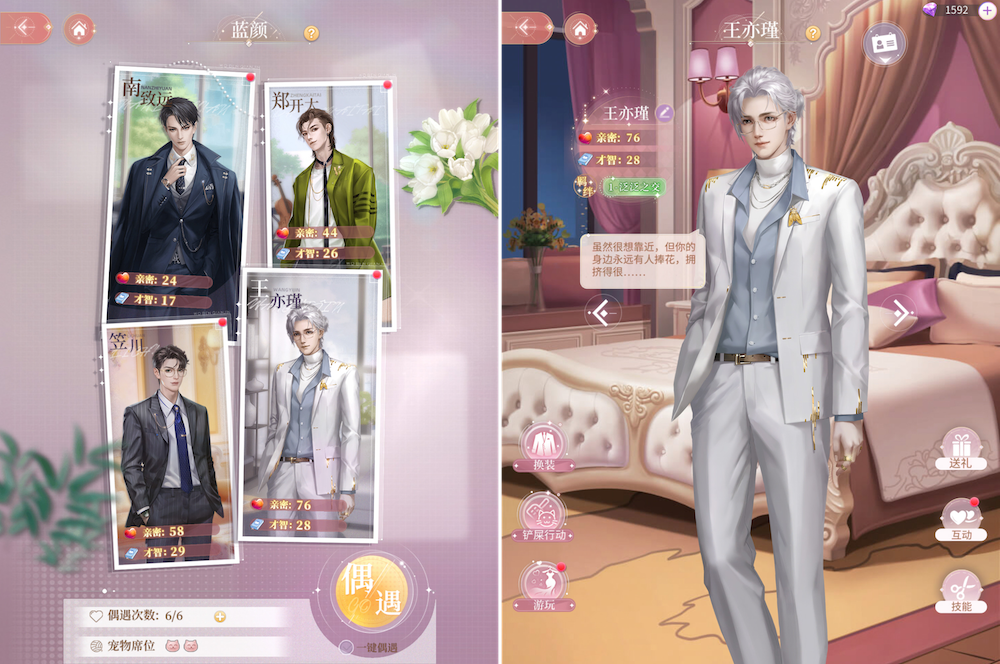
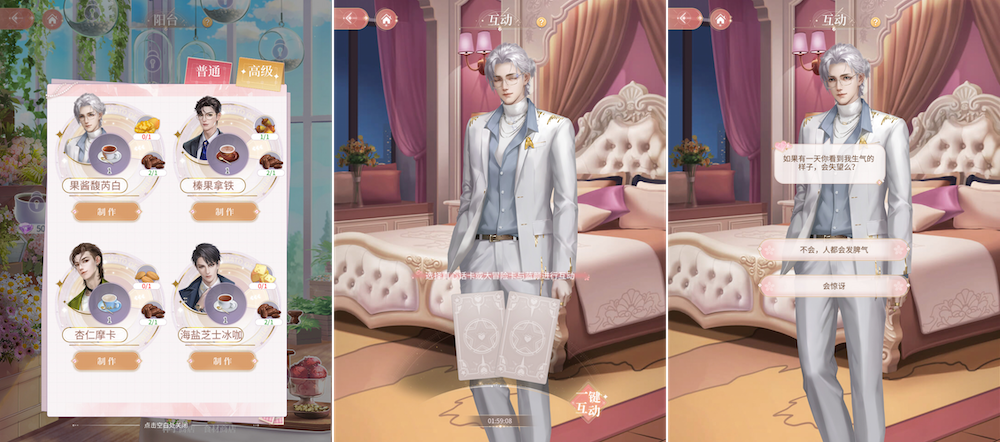
Monetization
Similar to the West, Chinese interactive story games focus a lot on clothing and fashion. There are usually several ways to decorate a character or a collection of characters with skins and decorative items, some of which have gameplay effects too.
In I’m a True Princess, pieces of clothing and clothing sets for the avatar character provide points needed to pass through levels. For example, a player might need 1500 points to progress the storyline. A dress is worth 842 points, a bag 106, and shoes 205, accumulating into the number of points the outfit has. If the player’s outfit exceeds the number of points required, they pass the level. If it falls below, this incentivizes players to buy more clothing so they can progress further.
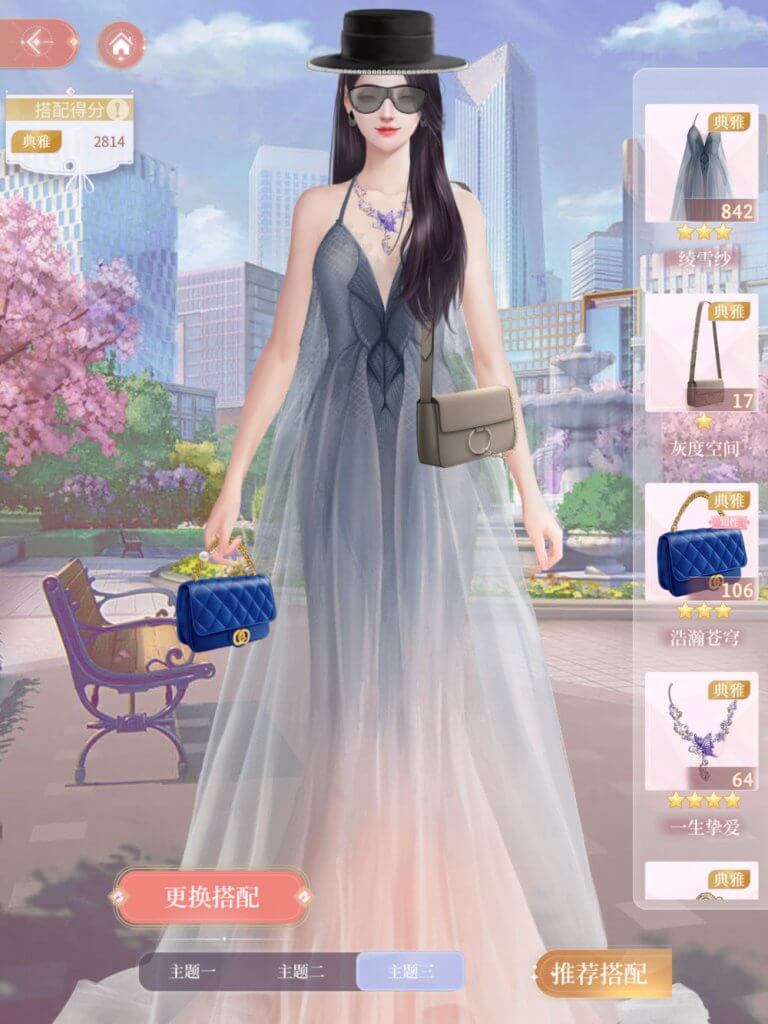
In general, monetization focuses on decorative aspects and especially on collecting and developing the characters, which differs from the monetization of Western interactive story games that usually focus on just monetizing the premium choices and decorative elements. There are many ways to collect characters or the items required to level them up. One of the most common ways is to collect characters and items from permanent or limited-time gachas.
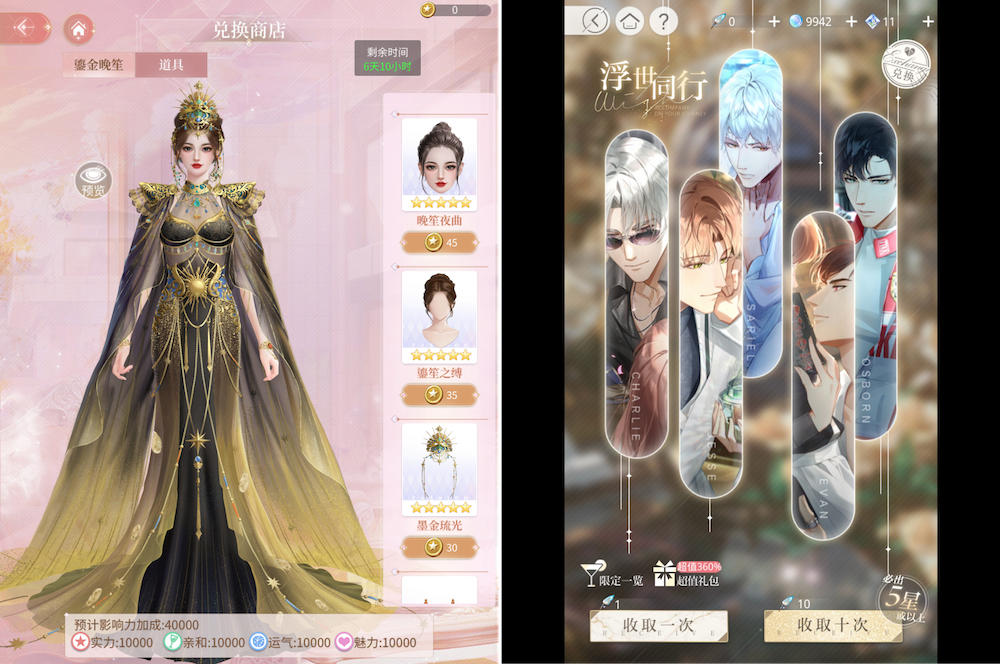
Chinese interactive story games also have several types of energy mechanics. One of the most common uses of energy is to consume it and progress through the storyline chapters, but there are other ways to use energy in these games, such as being able to play different PvP and PvE modes in I’m a True Princess. The player gets to play these modes a certain number of times every day, but if they want to continue playing them, they need to purchase more energy.
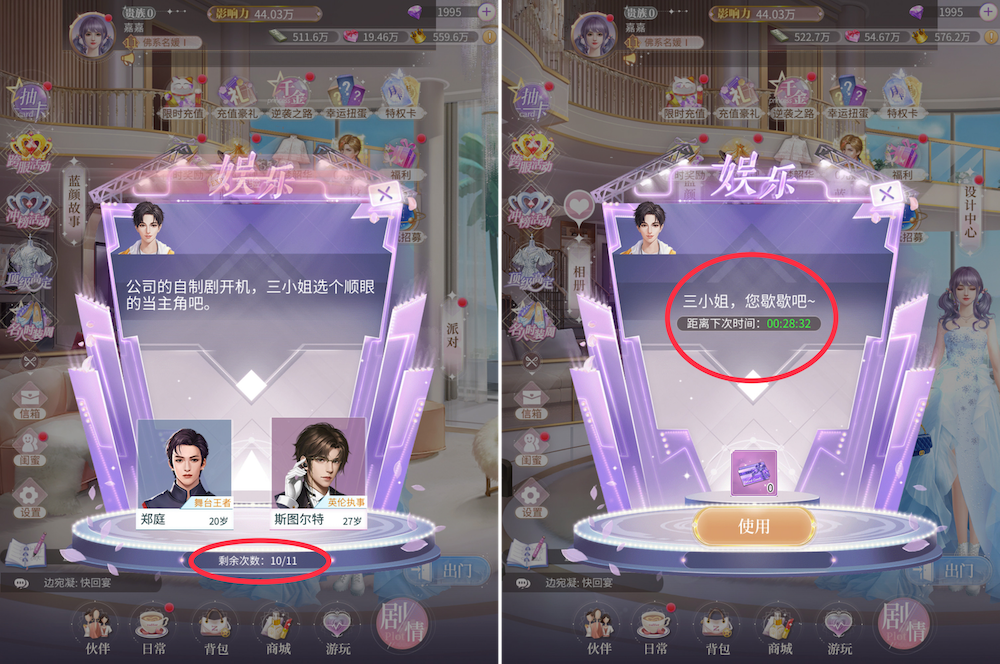
In I’m a True Princess, the core gameplay itself is not restricted by an energy mechanic, but the player needs to have a powerful-enough player avatar or companion characters to proceed through chapters, and this requires some items or experience. This can be gained from playing other game modes or collected from a mode called “party,” which boosts engagement by incentivizing players to come back to the game and collect more items.
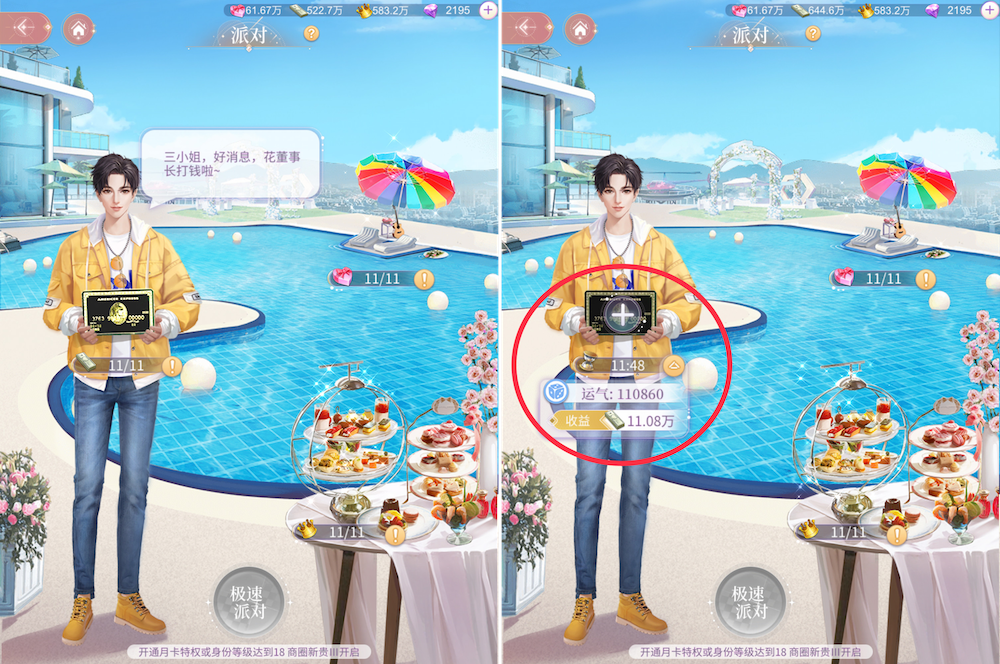
Other common ways that players can obtain different items are through battle pass plans, paid progression plans, and/or subscription plans. Chinese versions of these games are more content heavy than Western interactive story games as they offer a variety of gameplay content and play modes. It’s also one of the reasons these games have a diverse pool of monetization options. Different purchasable plans usually offer premium currency which can be used to purchase a number of things needed in the game, such as soft currency or items needed to upgrade characters.
Social elements and other game modes: Guilds and PvP/PvE
The most distinctive feature of Chinese interactive story games is their emphasis on social aspects, such as separate PvP and PvE modes, as well as guild mechanics. Let’s take a look at a few examples of how these games have incorporated different game modes and social elements.
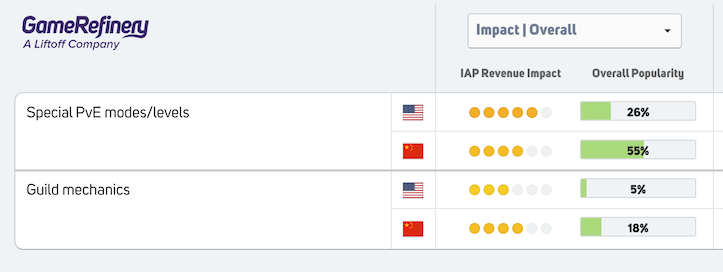
In I’m a True Princess, players can join a guild to access benefits from the co-op features, such as increasing their chances of getting items they need to progress through gameplay and participating in co-op tasks that give all players an extra reward when milestones are completed.
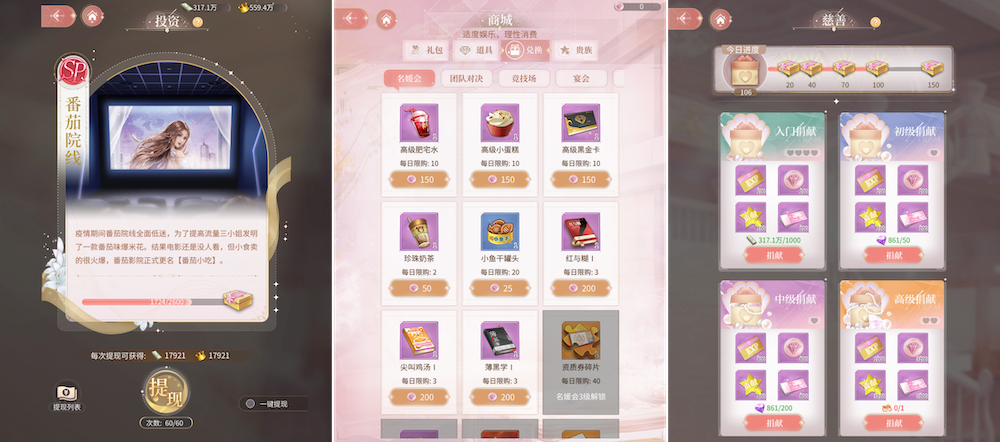
In the Chinese market, the gameplay is not only limited to following a storyline and making decisions. Games also have other game modes with PvP and PvE elements. In I’m a True Princess, PvP modes focus either on fighting against bosses and other players’ companion roster or dressing up their avatar character and competing against other players in a clothing contest.
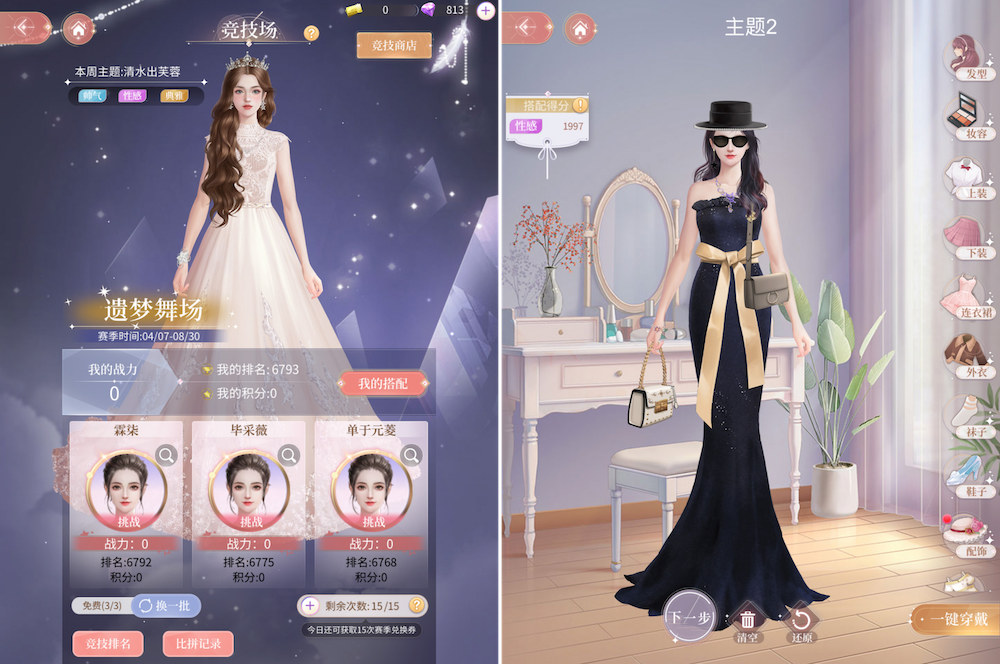
In Mr Love: Queen’s Choice’s PVP mode, the player forms her own entertainment company by selecting three in-game characters to compete with other players’ companies, aligning with the game’s theme of media production. The asynchronous PvP mode also has a leaderboard where players can track their rank and compare it to other players.
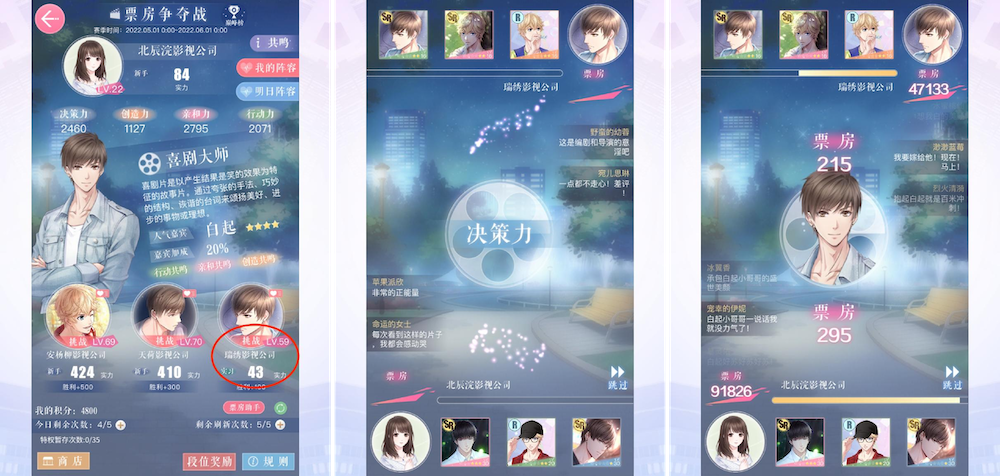
I’m a True Princess also has PvE modes to expand the players’ gameplay experience, offering some interesting examples of how to expand interactive story games with other gameplay elements. In one ‘choosing’ mode, players are asked questions such as “which of the guys do you want to be a model to present the clothes you have designed?” and the player can then pick one of the presented guys for the task.
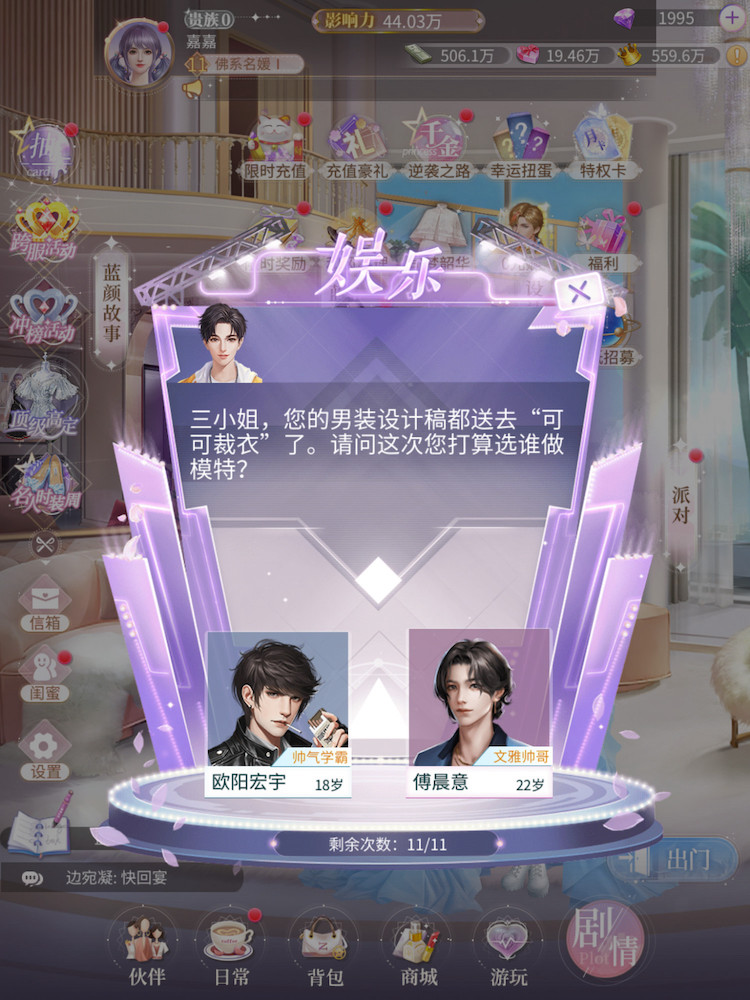
Another PvE mode is related to the already-mentioned male friend mode, where players can enhance their relationships with different male friends. In addition to giving gifts to the male friends and chatting with them to increase the relationship level, each male friend conceals their own path of a PvE mode with levels to complete. This PvE mode focuses on dressing characters in a clothing combination that gives enough points to pass the level. By collecting outfits and pieces of clothing that have a high level of points, players increase their chances of progressing through these levels.
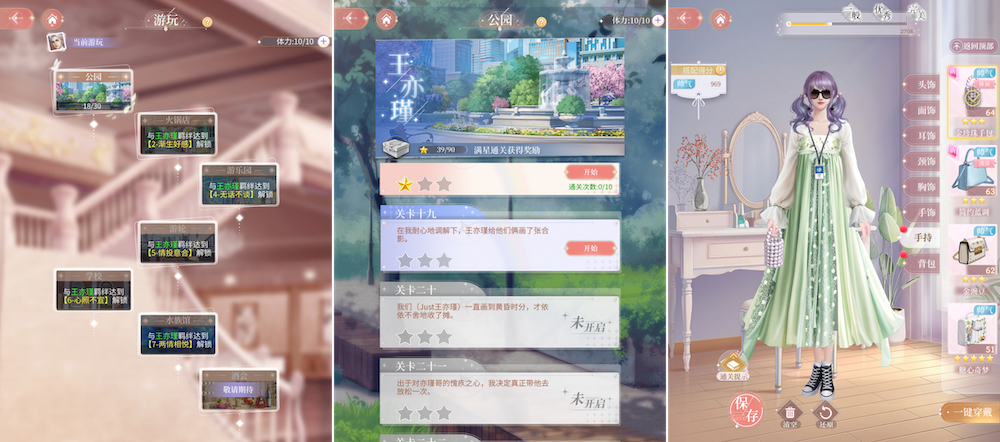
Conclusion
While they share similar core story mechanics, Chinese interactive story games differ from the Western interactive story games with their emphasis on RPG-like elements, such as collecting a roster of characters, upgrading them, and often battling them in PvE and PvP modes. You can also expect to see more meta layers and hybrid gameplay elements in Chinese interactive story games.
The emphasis remains on progression through the main storyline, but the gameplay experience is spiced up with some distinctive game modes and the relationship the player has with their avatar and character roster.
Tailoring the content to suit the target country’s audience can make a world of difference, which is why thorough market research is crucial if you want your game to succeed in new markets. If you are looking to expand your game to foreign markets, feel free to contact us for a demo session on how to best use the GameRefinery platform for market research purposes. In the meantime, we suggest checking these blog posts on games that found success through localization: Success Through Localization – A Look Into the Japanese Version of State of Survival and Teamfight Tactics Is Making a Killing in China – How?
If you enjoyed reading this post, here are a few more you should definitely check out:

